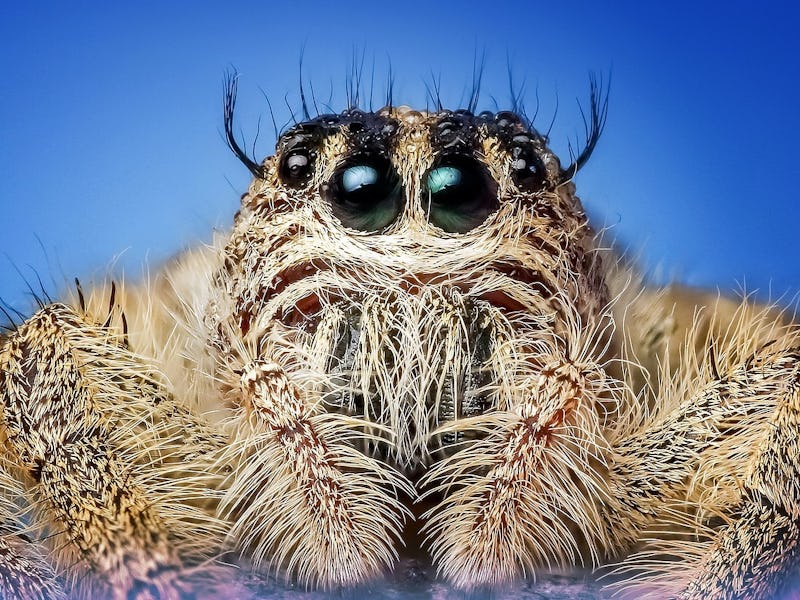Jumping Spiders Can See Galaxies Far, Far Away
Telescopic eyes that can peer into alternate galaxies.

Spiders are already scary impressive, what with their speed, cunning hunting skills, and jumping ability. Now, they can add another attribute to their list: telescopic eyes that peer into faraway galaxies.
The question came up after a series of tweets on using laser points to lure spiders. Astronomer Jamie Lomax had been tweeting about jumping spiders taking over her office. After a tweet from a colleague who suggested that she use a laser pointer to lead her eight-legged squatters out, she noticed that the jumping spiders responded differently to certain colored laser dots. While they followed the red dot, the green dot was much more appealing to them.
Morehouse Lab’s subsequent tweets went viral.
The jumping spider’s eyes also have another feature: They work like a Galilean telescope. Their two main eyes each have a long gel-filled tube beneath their lenses. As the light travels down the tube, it bends. The bottom of the tube spreads the light out and enlarges the images before it hit the spider’s retina. Their eyes even swivel like a telescope. The muscles in their retina allow them to change their point of view without moving their head or entire body.
The jumping spider's eyes work like a Galilean telescope, bending light to enlarge an image
According to Morehouse, jumping spiders could probably see the moon at night. Lomax and her colleague did some calculations and confirmed that spiders could see the moon, suggesting that the spiders probably had enough spatial acuity to see our neighboring galaxy Andromeda. This means the spiders can see clearly enough to make out the separate points and lines as far as 2.5 million light-years away. Unfortunately, because of their limited light receptors, they aren’t able to detect light that dim.
It’s too bad jumping spider eyes are only partially equipped to see the 26 black hole candidates NASA has discovered in Andromeda.